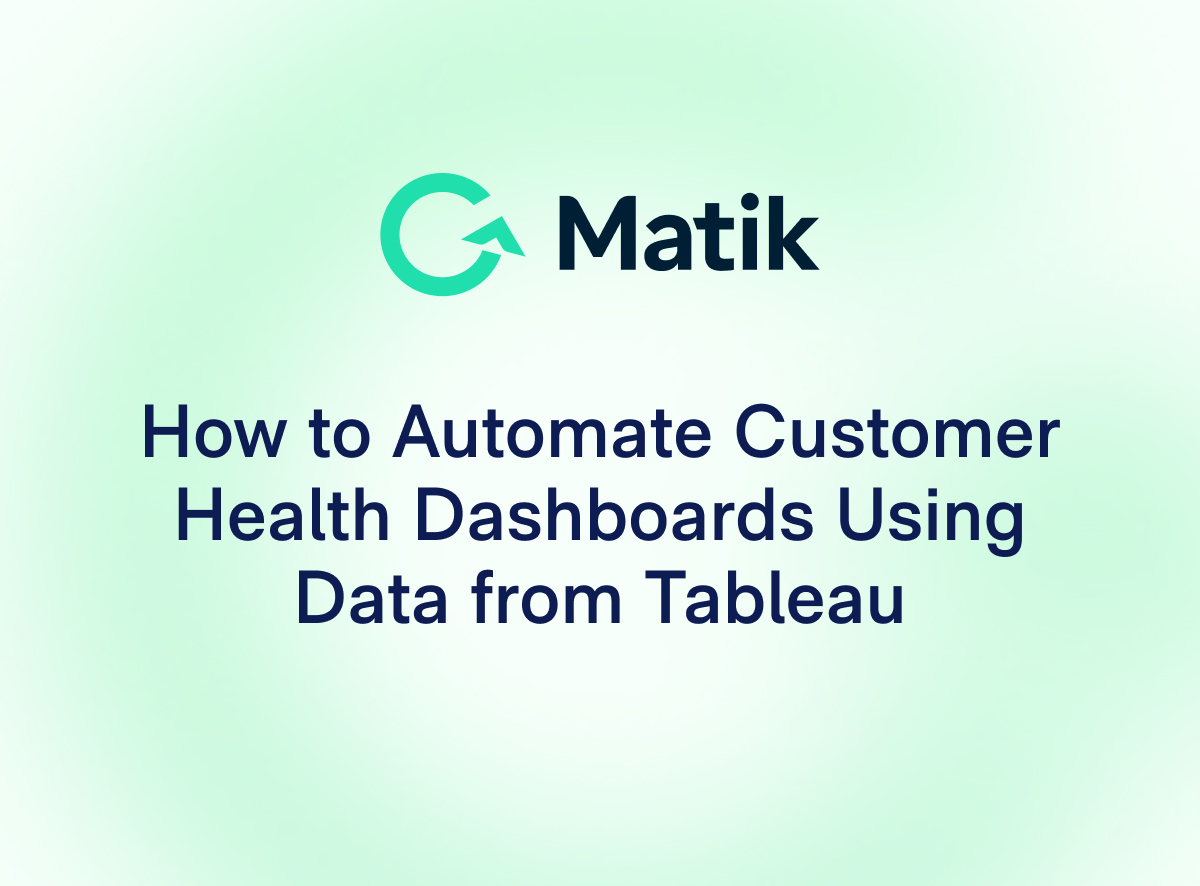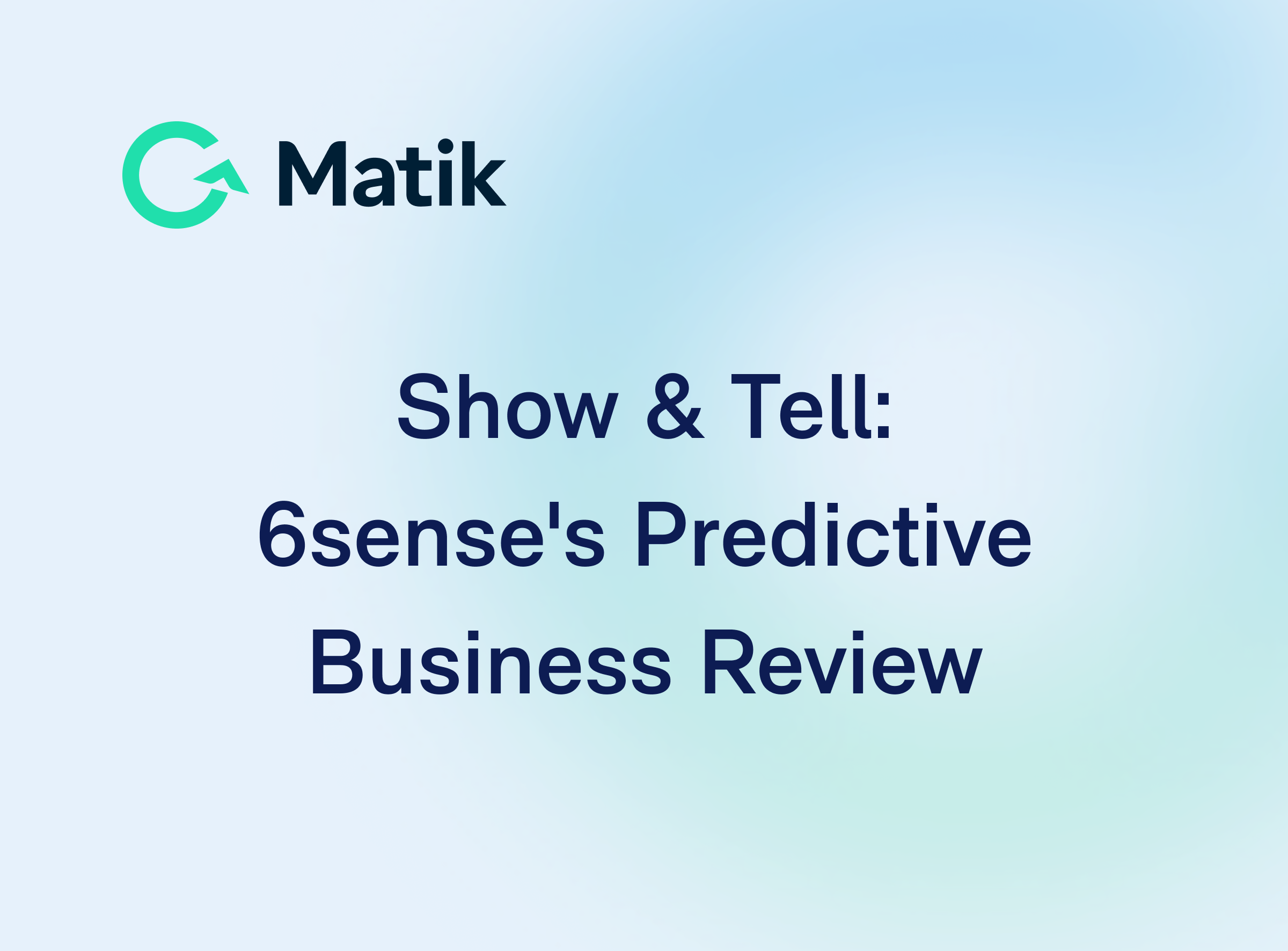Join Our Newsletter
In today's data-driven world, the ability to effectively communicate data insights is no longer solely on revenue operations and data teams. Every team, from marketing to customer success, can benefit from harnessing the power of data to make informed decisions, build trust, and drive results.
Interpreting and presenting data can be challenging for non-data-savvy teams. While revenue operations teams may excel at understanding and translating data into digestible information, it's crucial to empower your customer-facing teams with the same skills. This guide offers essential techniques to help bridge the data literacy gap.
Why Enable Teams on Data
Enabling customer success teams to become more data-savvy is crucial because they are key ambassadors of your brand and vital for cultivating trust. To build the credibility needed for ongoing customer loyalty, they must be able to prove product value with solid data. When equipped with the right data skills, trust-building becomes an integral part of the entire customer journey, positioning your CS team as trusted advisors.
When to do Data Enablement
When it's time to enable your team, it's important to carefully plan what the process will look like and when to begin. Tailor your content to your audience by gathering feedback from customer-facing team members to ensure you're curating the right assets. Prioritize data integrity and clarity in presentations, so key insights are conveyed effectively. As you move into the launch phase, empower champions who can communicate the data and test parts of your presentation to confirm its effectiveness. Establish a strong feedback loop to refine your approach continuously. During the iteration phase, consider the needs of the entire team, provide context for any changes, and be ready to adjust based on valuable feedback to ensure your teams can leverage data to drive customer outcomes.
Here is a deeper look into each phase and what to focus on in each stage:
Creation - The data enablement journey begins by focusing on what you plan to deliver to your GTM teams. Understanding your audience is crucial for tailoring your enablement content, whether it's dashboards or presentations, to ensure insights are effectively communicated. Start by holding research sessions to gather feedback from team members who work directly with customers, helping you curate the right assets. Prioritize data integrity by ensuring accurate information and maintaining a reliable data pipeline. During presentations, aim for clarity; be sure that your visuals convey key insights and that your team can grasp them within 20 seconds or less.
Launch - Ensure you have champions who can effectively communicate the data and content. Conduct field testing on parts of your presentation to ensure the data insights communicated are effective and display value to your customers. Additionally, you should establish a strong feedback loop by engaging in calls, conducting surveys, monitoring Slack channels, and reviewing recordings. Collect feedback from customers early and frequently to refine your approach.
Iteration - When enabling GTM teams, it's essential to consider the needs of the entire audience rather than just the loudest voices. This approach ensures that you meet everyone's needs. Adding context when making changes is important, as is explaining the rationale behind those changes. Iteration is key, as you may receive valuable feedback that necessitates adjustments, such as changes in messaging or updates for a new product SKU. All of these factors can lead to necessary modifications that should be implemented.
Best Tactics for Data Enablement
Set your teams up for success by creating a video walkthrough and developing a glossary of acronyms. Ensuring that your team is familiar with the language used within the organization will be beneficial. Additionally, having an internal wiki page serves as a valuable resource where teams can access internal information, talk tracks, and find answers to any questions they may have.
Conclusion
By empowering your teams with the right data skills, you ensure they can effectively communicate insights, build trust, and deliver value throughout the customer journey. A well-planned enablement process, combined with continuous iteration and support, will equip your teams to excel in today’s data-driven landscape, fostering stronger customer relationships and driving success.
---
Interested in Matik? Request a Demo















